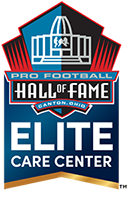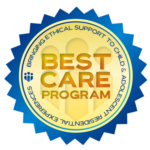Inhalant Abuse, Whippets and Sudden Sniffing Death Syndrome
The use of inhalants dates back to the 19th century when nitrous oxide was introduced as an intoxicant. Nitrous oxide was recognized for its euphoric mental and physical effects on those who inhaled it. This led to recreational use within upper-class society and later contributed to the development of modern anesthetics. Unfortunately, this substance soon proved to be both addictive and dangerous. In the 1950s, inhalant abuse became widespread among teens and youth, leading to troubling consequences for those taking part in it, including sudden sniffing death syndrome.
Inhalants can be easy to access, as they can be found in everyday household, industrial and medical products. Although there are laws against selling these products to minors, this epidemic is rampant among teens and children under the age of 18. Keep reading to learn more about inhalant abuse, sudden sniffing death syndrome and how you can identify inhalant abuse in your teen.
Commonly Used Inhalants
Inhalants are separated into four distinct categories, each containing a list of products commonly sold in stores. These categories include:
- Volatile solvents. These are liquids that become gas at room temperature. Paint thinners and removers, dry-cleaning fluids, degreasers, gasoline, glues, correction fluids and felt-tip markers are examples of products that include this type of inhalant.
- Aerosols. These sprays contain propellants and solvents, which can be found in spray paints, deodorant and hair sprays, vegetable oil sprays and fabric protector sprays.
- Gases. This category includes nitrous oxide, also known as whippets: the most commonly used inhalant. These inhalants can be found in whipped cream dispensers, products that boost octane levels in racing cars, butane lighters, propane tanks and refrigerants.
- Nitrites. These inhalants were previously used in certain diagnostic procedures and were prescribed to treat heart pain. They have since been prohibited, but are still found in products that read “video head cleaner,” “room odorizer,” “leather cleaner” or “liquid aroma.”
Dangers of Inhalant Abuse
Although teenagers are often unaware of the dangers that come with inhalant abuse. In a single sitting with repeated inhalations, someone misusing these drugs may begin to experience a loss of control, nausea, vomiting, a long-lasting headache and drowsiness. Repeated inhalant abuse can have long-term effects, including:
- Liver and kidney damage
- Hearing loss
- Bone marrow damage
- Nerve damage
- Delayed behavioral development
- Brain damage
If someone overdoses on an inhalant, they can experience serious health problems, including seizures and coma. In some cases, inhalant use can even lead to death, known as sudden sniffing death syndrome.
Sudden Sniffing Death Syndrome
Sudden sniffing death syndrome occurs when a user’s body goes into cardiac arrest or heart failure upon abusing an inhalant. Its primary cause is a lack of oxygen reaching the heart. This can happen to someone the first time they use an inhalant, as well as any time after that. Although sudden sniffing death syndrome can occur with any inhalant, it is most common among those abusing air conditioner coolants, butane, propane and aerosol products.
How Can You Tell If Someone is Huffing?
Since the effects of using inhalants wear off within minutes, it can be difficult to identify if a loved one is using them. Some signs that parents, teachers and physicians should look out for when it comes to identifying inhalant abuse include:
- Chemical odors on breath or clothing
- Paint or other stains on the face, hands or clothes
- Hidden spray paint or solvent containers and chemical-soaked rags or clothing
- Drunk or disoriented behavior
- Slurred speech
- Nausea or loss of appetite
- Inattentiveness, lack of coordination, irritability and depression
Get Help Today
Understanding and addressing your son’s inhalant abuse can be both frightening and difficult. If you suspect that your son has been abusing inhalants, ARCH Academy is ready to help your family navigate the road to recovery.
Our treatment plans include a supportive peer culture, group therapy and a strong emphasis on family therapy, all while ensuring that your child continues to work toward their educational goals. Contact us today to schedule an assessment and receive an individualized treatment plan for your loved one.




